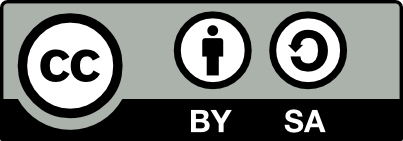Please use this identifier to cite or link to this item:
https://hdl.handle.net/2445/47406Full metadata record
| DC Field | Value | Language |
|---|---|---|
| dc.contributor.advisor | Radeva, Petia | - |
| dc.contributor.author | Bolaños Solà, Marc | - |
| dc.date.accessioned | 2013-10-31T09:43:34Z | - |
| dc.date.available | 2013-10-31T09:43:34Z | - |
| dc.date.issued | 2013-06-20 | - |
| dc.identifier.uri | https://hdl.handle.net/2445/47406 | - |
| dc.description | Treballs Finals de Grau d'Enginyeria Informàtica, Facultat de Matemàtiques, Universitat de Barcelona, Any: 2013, Director: Petia Radeva | ca |
| dc.description.abstract | It is clear that every day that goes by, technology is a little bit more present in our everyday life. Pervasive Computing (Ubiquitous Computing) is a fact that every one must assume, and even though ethical and moral topics will always arise. There are unlimited aspects and usual tasks in which Pervasive Computing can improve our quality of life. One of the ways in which this recently emerging field can help us the most on making the quality of life of people a lot better, is on our feeding habits and all their related aspects: nutrition, physical activities, emotions and social interaction. Some of these environments are what this project intends to improve. One of the most evident problems for which we could be interested in logging every bit of the diet of one person would be overweight. People who clearly need help on their nutrition and all the habits related to it (like physical activities, emotions and social interaction), could get an incredible benefit. Using a device or some interconnected devices which are able to monitor and record different kind of information, could help them overcome their habits, and solve their weight problems. But, ultimately, every person, even without any evident nutrition problem, could also take a great advantage from a device like that. | ca |
| dc.format.extent | 68 p. | - |
| dc.format.mimetype | application/pdf | - |
| dc.language.iso | eng | ca |
| dc.rights | memòria: cc-by-nc-sa (c) Marc Bolaños Solà, 2013 | - |
| dc.rights | codi: GPL (c) Marc Bolaños Solà, 2013 | - |
| dc.rights.uri | http://creativecommons.org/licenses/by-sa/3.0/es | - |
| dc.rights.uri | http://www.gnu.org/licenses/gpl-3.0.ca.html | - |
| dc.source | Treballs Finals de Grau (TFG) - Enginyeria Informàtica | - |
| dc.subject.classification | Reconeixement òptic de formes | cat |
| dc.subject.classification | Processament digital d'imatges | cat |
| dc.subject.classification | Programari | cat |
| dc.subject.classification | Treballs de fi de grau | cat |
| dc.subject.classification | Sistemes classificadors (Intel·ligència artificial) | ca |
| dc.subject.other | Optical pattern recognition | eng |
| dc.subject.other | Digital image processing | eng |
| dc.subject.other | Computer software | eng |
| dc.subject.other | Bachelor's theses | eng |
| dc.subject.other | Learning classifier systems | eng |
| dc.title | Automatic Labeling Application Applied to Food-Related Object Recognition | ca |
| dc.type | info:eu-repo/semantics/bachelorThesis | ca |
| dc.rights.accessRights | info:eu-repo/semantics/openAccess | ca |
| Appears in Collections: | Programari - Treballs de l'alumnat Treballs Finals de Grau (TFG) - Enginyeria Informàtica | |
Files in This Item:
| File | Description | Size | Format | |
|---|---|---|---|---|
| memoria.pdf | Memòria | 14.31 MB | Adobe PDF | View/Open |
| src.zip | Codi font | 10.7 MB | zip | View/Open |
This item is licensed under a
Creative Commons License



